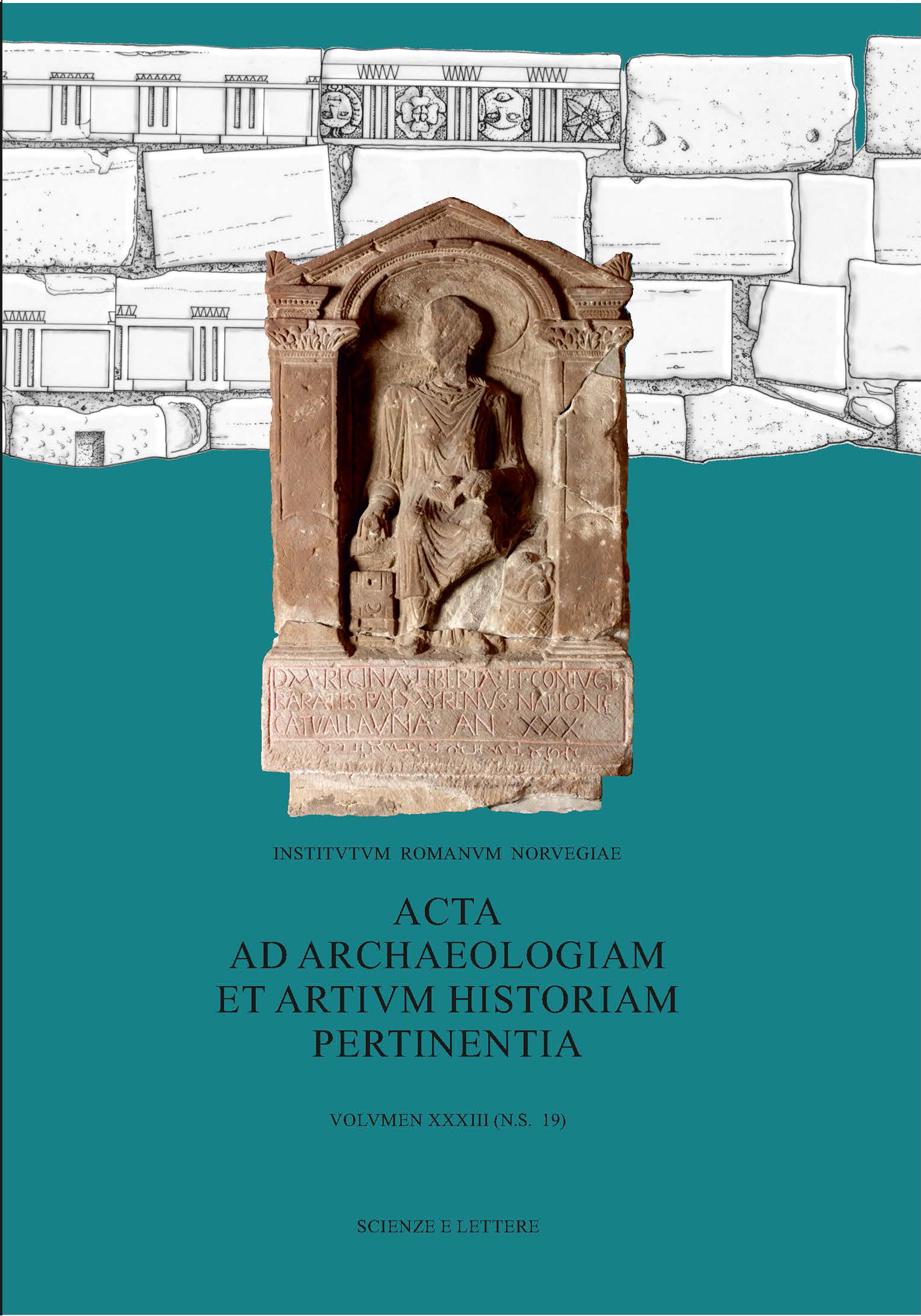The harbour of Venus? Sub-elite identities, multisensorial adornment, and Pompeian bars
DOI:
https://doi.org/10.5617/acta.10441Keywords:
adornment, jewellery, Pompeii (Extinct city), senses, identity, sub-elite identities, Antiquity, Late AntiquityAbstract
From the bars and inns (thermopolia, cauponae, and hospitia) of Roman Pompeii, destroyed in the eruption of Vesuvius in AD 79, a variety of different types of jewellery has been found. The bars have been excavated both inside the perimeter of the ancient city and in its harbour suburb. In particular, the complete gold parure found in a river-side caupona at Moregine (building B), featuring body-chains, bracelets, and anklets, gives rise to the hypothesis that this kind of outfit of abundant gold jewellery, plausibly worn on the nude body, may have been less typically owned by elite matrons and more distinctive of sub-elite women working in bars, perhaps even connect-ed with sex work. This hypothesis is tested by questioning the multiple multi-sensorial ways in which jewellery could attract attention to the wearer’s body and signal non-elite status. Among the more ephemeral and rarely considered features are the visibility of the jewellery, based on its dimensions, material, placement on intimate areas of the body, its mobility, and perhaps also the tinkling sounds produced by its movement. As a conclusion, there seems to be a connection between the abundant use of jewellery of high visual impact, acoustic qualities referring to dance and the hospitality business in the inns of Pompeii.
On cover:
Late Roman wall, the portion immediately south of the West Gate (Porta Oea) with re-used blocks from first-century mausolea (Drawing by Francesca Bigi) and Tombstone of Regina from South Shields (Arbeia) (Tyne and WearArchives and Museums/ Bridgeman Images).
E-ISSN (online version) 2611-3686
ISSN (print version) 0065-0900
Downloads
Published
How to Cite
Issue
Section
License
Copyright (c) 2023 This work is licensed under a Creative Commons Attribution-NonCommercial 4.0 International License.

This work is licensed under a Creative Commons Attribution-NonCommercial 4.0 International License.

This work is licensed under a Creative Commons Attribution-NonCommercial 4.0 International License.
Authors who publish with this journal agree to the following terms:
- Authors retain copyright and grant the journal right of first publication with the work simultaneously licensed under a Creative Commons Attribution License that allows others to share the work with an acknowledgment of the work's authorship and initial publication in this journal.
- Authors are able to enter into separate, additional contractual arrangements for the non-exclusive distribution of the journal's published version of the work (e.g., post it to an institutional repository or publish it in a book), with an acknowledgement of its initial publication in this journal.
- Authors are permitted and encouraged to post their work online (e.g., in institutional repositories or on their website) prior to and during the submission process, as it can lead to productive exchanges, as well as earlier and greater citation of published work (See The Effect of Open Access).





